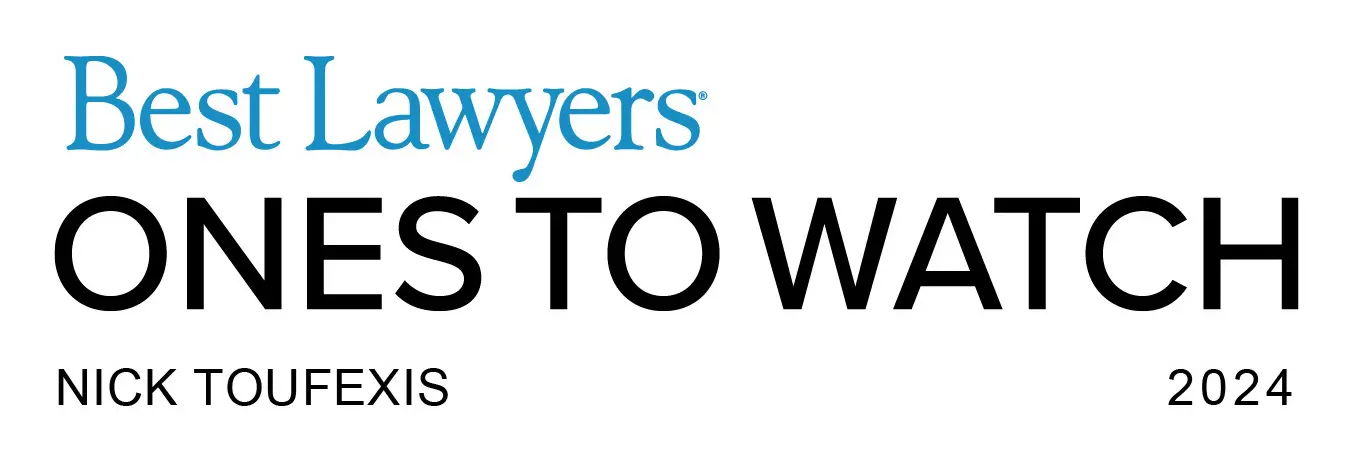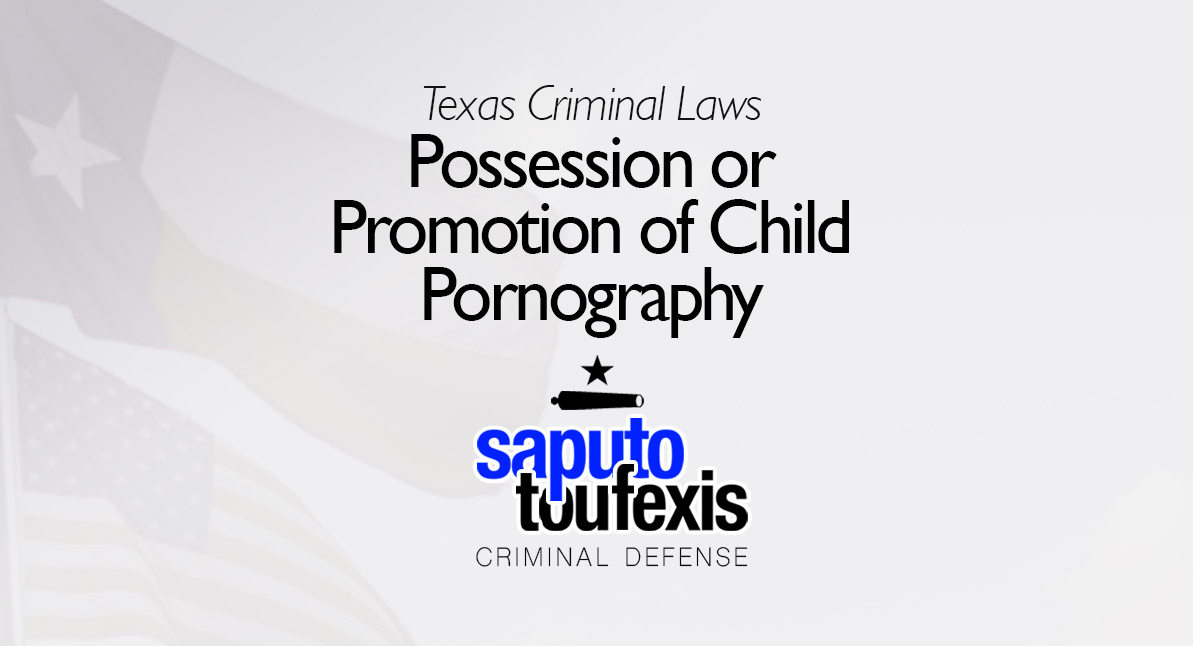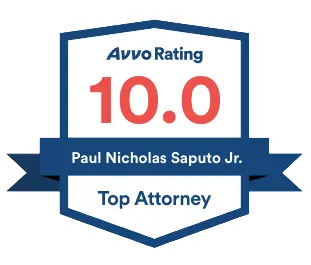The Texas Possession of Child Pornography law and Promotion of Child Pornography law both cover visual material depicting actual children younger than 18 engaged in “sexual conduct” and, for offenses on or after September 1, 2025, computer-generated children that appear to be children engaged in “sexual conduct.”
FAQs about the
Possession of Child Pornography law in Texas
- What is the current Texas law about child pornography?
- What is the penalty for a Texas Possession of Child Pornography offense?
- What is “sexual conduct” under Texas law?
- What constitutes a visual depiction of a child?
- In computer forensics, what does it mean to possess the child pornography material?
- What are the affirmative defenses to possession of child pornography?
- How long will I have to register as a sex offender if I am convicted of Possession of Child Pornography?
- What changed in 2025?
- What is the statute of limitations for Possession of Child Pornography in Texas?
- Can you get probation for Possession of Child Pornography in Texas?
- Do I have to register as a sex offender in Texas if guilty of Possession of Child Pornography?
- What level of crime is Possession of Child Pornography in Texas?
The Texas legislature codified this criminal offense in Texas Penal Code Section 43.26. The law was updated in 2023, to include an expanded definition of the applicable visual materials targeted at deepfake child porn and additional felony enhancements.
Have you been charged with Possession or Promotion of Child Pornography? Contact us today to discuss legal representation.
or Text or Call (888) 239-9305
However, the law was comprehensively amended in 2025, adding new definitions that cover both actual children and virtually indistinguishable computer-generated children and overhauling the offense structure and punishment scheme. It also completely overhauled the penalty scheme, repealing what was just passed in 2023.
The newer criminal offense of Possession or Promotion of Lewd Visual Material Depicting Child prohibits similar types of visual material, but that law does not require sexual conduct at all.
In order to convict you of Possession or Promotion of Child Pornography under state law on or after September 1, 2025, the State must prove you intentionally or knowingly possessed, or intentionally or knowingly accessed with intent to view, visual material showing either a child engaging in sexual conduct, where you knew or should have known the depiction was of a child younger than 18 at the time the image was made, or a computer-generated child image engaging in sexual conduct, where you knew or should have known (new for 2025) the depiction appears to be a child or believed it depicted an actual child. For offenses committed before September 1, 2025, liability covered only depictions of real children and required proof that you knew the material depicted a child.
After the 2025 amendments, this law, especially with the complicated penalty provisions, might be the most complex in the entire Penal Code.
Child porn cases can involve complicated issues like: Who “possesses” the computer files containing child porn if the computer is shared among many people? Do you really “knowingly and intentionally” possess a computer file that was automatically downloaded by an internet browser? How do you prove the age of an individual when you don’t know who the individual is and can’t contact them?
You can be prosecuted under federal child pornography laws in addition to, or instead of, state law. Federal child pornography laws carry extremely severe penalties. For example, a first-time conviction for producing child pornography under 18 U.S.C. § 2251 (Sexual Exploitation of Children) involves fines and a statutory minimum of 15 years to 30 years in prison. Harsher penalties are available if the government can show prior convictions or if the child pornography offense occurred in certain aggravated situations, in which case a convicted person may face up to life imprisonment.
Defending against child porn charges is a complicated task owing to the serious social stigma attached to child pornography cases (people are frequently pre-judged as guilty), complex technology used in the investigations and the confluence of difficult legal concepts in criminal law such as “possession” and the other ones described in the above paragraph.
The Penal Code classifies the Texas Possession of Child Pornography law under Title 9 “Offenses Against Public Order and Decency,” Chapter 43 “Public Indecency.” These “public indecency” crimes are sex crimes, but they are not of a violent or assaultive nature. Learn more about the Texas offense of Possession or Promotion of Child Pornography below.
What is the current Texas law about child pornography?
The law that went into effect September 1, 2025 separates this offense into two different categories. The first category is Possession of Child Pornography and appears in subsection (a-1), with a related offense for computer-generated depictions in subsection (a-2). The second category is Promotion of Child Pornography and appears in subsection (e), with a related offense for computer-generated depictions in subsection (e-1).
AV Preeminent Texas lawyer Paul Saputo provides the current law defining Possession or Promotion of Child Pornography in Penal Code Section §43.26, as follows:[1]
Possession of Child Pornography
(a-1) A person commits an offense if:
(1) the person intentionally or knowingly possesses, or intentionally or knowingly accesses with intent to view, visual material that contains a visual depiction of a child engaging in sexual conduct, including a depiction of a child engaging in sexual conduct as a victim of an offense under Section 20A.02(a)(5), (6), (7), or (8); and
(2) the person knows or should have known that the depiction described by Subdivision (1) is of a child younger than 18 years of age at the time the image of the child was made.
(a-2) A person commits an offense if the person:
(1) intentionally or knowingly possesses, or intentionally or knowingly accesses with intent to view, visual material that contains a visual depiction of a computer-generated child engaging in sexual conduct; and
(2) either:
(A) knows or should have known that the depiction described by Subdivision (1) appears to be of a child younger than 18 years of age; or
(B) believes that the depiction is of an actual child younger than 18 years of age at the time the image of the child was made.
Promotion of Child Pornography
(e) A person commits an offense if:
(1) the person intentionally or knowingly promotes[2] or possesses with intent to promote visual material described by Subsection (a-1)(1); and
(2) the person knows or should have known that the depiction described by Subsection (a-1)(1) is of a child younger than 18 years of age at the time the image of the child was made.
(e-1) A person commits an offense if the person:
(1) intentionally or knowingly promotes or possesses with intent to promote visual material described by Subsection (a-2)(1); and
(2) either:
(A) knows or should have known that the depiction described by Subsection (a-2)(1) appears to be of a child younger than 18 years of age; or
(B) believes that the depiction is of an actual child younger than 18 years of age at the time the image of the child was made.
How the 2025 rewrite changes the liability paragraphs
Before 2025, liability was built around one possession paragraph in (a) and one promotion paragraph in (e). Both applied only to images of actual children, and both required that you “knew” the material depicted a child.[3]
As of September 1, 2025, the liability structure is split and expanded:
- Possession of actual‑child material now appears in (a‑1). The knowledge requirement is broader: liability attaches if you “know or should have known” the person depicted was a child at the time the image was made.
- Promotion of actual‑child material remains in (e) with the same expanded “knows or should have known” standard.
- New paragraphs (a‑2) and (e‑1) cover computer‑generated‑child material. You can be liable if you “know or should have known” the depiction appears to be of a child, or if you “believe” it is of an actual child.
In practical terms, here is what changed:
- Liability that did not exist before but exists now: possessing or promoting virtually indistinguishable computer‑generated depictions that appear to be of a child; possessing or promoting actual‑child material when you should have known it depicted a child.
- Liability that existed before and still exists: possessing or promoting visual material of an actual child engaged in sexual conduct when you know it depicts a child.
- Liability that used to be narrower: under the former law, the State had to prove you knew the material depicted a child; now, for actual‑child material, proof that you should have known can also establish liability.
These points address only the liability paragraphs. See penalties and defenses for how punishment ranges and defenses apply.
What is the penalty for a Texas Possession of Child Pornography offense?
The penalty scheme that applies to offense conduct varies depending on the offense date.
Penalties for conduct on or after September 1, 2025
The legislature completely revamped the penalty structure for this offense in 2025. It is now perhaps the most complicated penalty structure in the entire Penal Code. I have organized the penalty rules into four categories:
Possession involving a real child.[4] The statute sets a base level of a third-degree felony for possessing images or videos of a real child. The punishment increases to a second-degree felony if there is one qualifying prior conviction under Chapter 43 or another offense that requires sex-offender registration, or if the collection contains 10 to 49 images. It becomes a first-degree felony if there are two or more qualifying prior convictions, if the collection contains 50 or more images, or if any image shows conduct that would be sexual assault of a child under §22.011(a)(2). For certain roles and locations, penalties are higher: if the person worked in covered child-care or youth-facility jobs or displayed the material in a school library, the offense carries a 25-year minimum. If any image shows a child younger than 10, a third- or second-degree case moves up one level, and a first-degree case has a 15-year minimum.
Possession involving AI-generated images that look like a child.[5] This offense starts as a state jail felony. The punishment increases to a third-degree felony if there is one qualifying prior conviction or if the collection contains 10 to 49 images, and it becomes a second-degree felony if there are two or more qualifying priors or if the collection contains 50 or more images. If the person worked in a covered child-care or youth setting or displayed the material in a school library, the offense is a second-degree felony with a 10-year minimum. If any image appears to show a child younger than 10, the punishment moves up one level, and the 10-year minimum still applies to covered-employee and school-library cases.
Promoting images of a real child.[6] Two different 2025 amendments set different starting points. Under the HB 1778 version, promotion (or possession with intent to promote) is a first-degree felony, and if the person has a prior §43.26 conviction and the material includes 50 or more images or shows sexual assault of a child, the minimum term is 15 years. Under the SB 1621 version, promotion starts as a second-degree felony, becomes a first-degree felony if there is a qualifying prior conviction, if the collection contains 10 to 49 images, or if any image shows a child who appears to be younger than 10, and carries a 15-year minimum if the collection contains 50 or more images or shows sexual assault of a child.
Promoting AI-generated images that look like a child.[7] This offense is a third-degree felony. The punishment increases to a second degree if there is a qualifying prior conviction, if the collection contains 10 or more images, or if any image shows a child who appears to be younger than 10, and there is a 10-year minimum if the collection contains 50 or more images.
What was repealed in 2025 and how that affects older cases.[8] The Legislature removed the 2023 enhancement paragraphs that had been labeled (d-1) and (d-2), so they do not apply to crimes committed on or after September 1, 2025. For earlier conduct, the former law can still control because the 2025 bills include provisions that keep prior law in place for offenses committed before the effective date. Everything in this paragraph summarizes the 2025 repeals and “prior-law applies” provisions.
Penalties for offenses committed before September 1, 2025
Offenses committed before September 1, 2025 are governed by the law in effect at the time of the offense conduct.[9]
Possession of Child Pornography, as charged under Subsection (a) in the earlier law, is punished as a felony of the third degree, unless one of the enhancements apply.[10]
From September 1, 2023, until the new law took effect on September 1, 2025, there were two conflicting penalty schemes in the law:
Senate Bill 1527 Penalty Scheme
Under the penalty scheme passed by Senate Bill 1527,[11] if you have a prior conviction under subsection (a) or, for offenses occurring after September 1, 2023, possessed between 10 and 50 child porn images or videos, then the offense is punished as a felony of the second degree. If you have two prior convictions under subsection (a), and you are convicted of the same offense again, the third conviction is punished as a felony of the first degree. The state can also seek a first degree felony offense by proving that you possessed 50 or more child porn images or videos or by proving that you possessed a video that visually depicts sexual assault of a child.
Promotion of Child Pornography, as charged under Subsection (e) under the 2023 law, is punished as a felony of the second degree, except that it is punished as a first degree felony if you have a prior subsection (e) conviction.[12] For offenses that occurred after September 1, 2023, the state may also seek a mandatory minimum of 15 years or a first degree felony enhancement by proving that you promoted child porn during the same “criminal episode” as the possession of it.
Senate Bill 129 Penalty Scheme
Under the penalty scheme passed by Senate Bill 129 in the 88th Legislature,[13] for offenses occurring after September 1, 2023, if you possessed fewer than 100 child porn images or videos, then the offense is punished as a third degree felony. If you possessed between 100 and 500 child porn images or videos, then the offense is punished as a second degree felony. If you possessed more than 500 child porn images or videos, then the offense is punished as a first degree felony. If you possessed any number of child porn images or videos, and at the time of the offense you were an employee of one of the childcare facilities described in (d)(4), then the offense is punished as a first degree felony, with a minimum 25 year prison sentence. Additionally, the state can seek an enhancement to the next higher grade of felony if you have a prior conviction under subsection (a) or the visual material depicted a child younger than 10 years of age at the time the image of the child was made.
Promotion of Child Pornography, as charged under Subsection (e) under the 2023 version of the law, is punished as a second degree felony, except that it is punished as a first degree felony if you have a prior subsection (e) conviction.[14]
Offenses Prior to 2015
All of the enhancements related to prior convictions do not apply to offenses occurring before September 1, 2015.[15]
What is “sexual conduct” under Texas law?
“Sexual Conduct” is defined as “sexual contact, actual or simulated sexual intercourse, deviate sexual intercourse, sexual bestiality, masturbation, sado-masochistic abuse, or lewd exhibition of the genitals, the anus, or any portion of the female breast below the top of the areola.”[16] Note that the definition is not comprehensive because it uses the word “includes” without saying or implying that the list is complete.
“Deviate sexual intercourse” is defined as “any contact between the genitals of one person and the mouth or anus of another person.”[17]
“Sexual contact” is defined as “any touching of the anus, breast, or any part of the genitals of another person with intent to arouse or gratify the sexual desire of any person.”[18] “Sexual intercourse” is defined as “any penetration of the female sex organ by the male sex organ.”[19]
What constitutes a visual depiction of a child?
In 2023, the Texas legislature added a subsection (i) to this law that specifies that visual material includes depictions of a child “(1) who is recognizable as an actual person by the person’s face, likeness, or other distinguishing characteristic, such as a unique birthmark or other recognizable feature; and (2) whose image as a child younger than 18 years of age was used in creating, adapting, or modifying the visual material, including computer-generated visual material that was created, adapted, or modified using an artificial intelligence application or other computer software.”[20]
Effective September 1, 2025, the prior subsection (i) is repealed and its rule is incorporated into the definition of “Depiction of a child” in §43.26(a)(1)(B), which covers images that use a real child’s image to create or modify visual material, including AI-generated content.[21]
“Visual material” is now defined in §43.26(a)(5) and includes traditional photographic media as well as any digital file format that allows an image to be displayed on a computer or other video screen:[22]
(5) “Visual material” means:
(A) any film, photograph, videotape, negative, or slide or any photographic reproduction that contains or incorporates in any manner any film, photograph, videotape, negative, or slide; or
(B) any disk, diskette, or other physical medium, or a file in any digital format, that allows an image to be displayed on a computer or other video screen and any image transmitted to a computer or other video screen by telephone line, cable, satellite transmission, or other method.
In computer forensics, what does it mean to possess the child pornography material?
What it means to “possess” something is a complicated area of law, and it is made even more complicated in the area of computer forensics and digital evidence. Determining whether you possessed a file is a difficult analysis to make, and whether you possessed a digital file knowingly and intentionally is an even more complicated question. Similarly, whether you “accessed with intent to view” is a difficult and complex notion for the state’s attorneys to prove and is open to attack on many fronts.
Often, prosecutors in these cases will point to your browser history, search engine query history, storage structure (like filenames and folder structures), file metadata (like access dates), and other circumstantial evidence related to digital file interactions on machines you can access. They sometimes try to prove (and even succeed in proving) their case without evidence of the files themselves. These are “ghost file” cases – where the government will argue they existed at one time on your machine.
What are the affirmative defenses to possession of child pornography?
Affirmative defenses effective as of September 1, 2025:
For offenses on or after September 1, 2025, §43.26 supplies the following affirmative defenses: (1) at the time of the offense, the actor was a judicial or law enforcement officer discharging official duties; and (2) for computer-generated-child cases under (a-2) or (e-1), the actor is not more than two years older than the depicted child. The former cross-referenced defenses from §43.25(f) apply only to offenses committed before September 1, 2025, and the “spouse” defense applies only to offenses committed before September 1, 2023.[23]
Affirmative defenses for offense conduct prior to September 1, 2025:
The older version of the child porn statute said that the “affirmative defenses provided by Section 43.25(f)(2) and (3) also apply” as a defense to possession or promotion of child porn under Texas law.[24] Those defenses are as follows:
- (f)(2) the conduct was for a bona fide educational, medical, psychological, psychiatric, judicial, law enforcement, or legislative purpose; or
- (f)(3) the defendant is not more than two years older than the child.
For offenses that occurred prior to September 1, 2023, the law also provided an affirmative defense that “the defendant was the spouse of the child at the time of the offense.”[25]
In addition, the statute provides a defense to prosecution for law enforcement officers and school administrators who possessed or accessed the visual material in good faith solely as a result of an allegation of Electronic Transmission of Certain Visual Material Depicting Minor and allowed other law enforcement or school administrative personnel to possess or access the material only as appropriate based on such an allegation and took reasonable steps to destroy the material within an appropriate period following the allegation.[26]
How long will I have to register as a sex offender if I am convicted of Possession of Child Pornography?
If you plead guilty to Possession of Child Pornography, whether you are convicted or placed on deferred adjudication probation, Texas law generally requires you to register as a sex offender for life. However, the registration period is lower for juvenile offenders,[27] and it is possible that you might be able to terminate the requirement early under the Texas deregistration process. Learn more about the early termination of sex offender registration requirements here
What changed in 2025?
Effective September 1, 2025, the Legislature comprehensively rewrote §43.26. These 2025 changes apply only to offenses committed on or after September 1, 2025.[28] The revisions include:
- Creation of separate offenses for possession of actual-child material and possession of computer-generated-child material.
Prosecutors no longer have to force every case into a single possession paragraph. Cases with images of real children are charged under one paragraph, and cases with realistic AI or other computer-generated depictions are charged under another. This expands liability to cover lifelike fakes even when no real child was used during creation. - The law now defines “Depiction of a child”.
Images built from a real child’s face or other recognizable features count as actual-child depictions, even if software was used to create or modify the final image. That closes the gap where defendants argued a composite or AI-edited image was not covered. - The law also defines “Depiction of a computer-generated child”.
The law targets visual material that appears to be a child and is virtually indistinguishable to a reasonable person. Crude or obvious cartoons are less likely to qualify. High-fidelity deepfakes and other realistic renders are now clearly within scope. - Reorganization of penalties for possession and promotion.
Punishment now scales by factors like quantity, prior convictions, and special contexts. Thresholds (for example counts of images), depictions of sexual assault, the age of the depicted child, and settings like school libraries or childcare employment can drive higher felony grades or mandatory minimums. Promotion has its own tiered structure separate from possession. - Repeal of the 2023 enhancements in subsections (d-1) and (d-2).
The 2023 add-on enhancements are removed for offenses on or after September 1, 2025. Their concepts are folded into the new grading scheme, so charging and punishment now flow from the rewritten penalty paragraphs rather than the old add-ons. For conduct before September 1, 2025, those 2023 enhancements can still control because the former law governs earlier offenses.
What is the statute of limitations for Possession of Child Pornography in Texas?
Possession of Child Pornography and Promotion of Child Pornography both had the default felony-level limitations period of three years until September 1, 2023, when these offenses were added to the list of felonies with a seven-year limitations period.[29]
Can you get probation for Possession of Child Pornography in Texas?
The Texas Code of Criminal Procedure prohibits judges from placing people convicted of this offense on probation.[30]
Do I have to register as a sex offender in Texas if guilty of Possession of Child Pornography?
Any Texas Possession of Child Pornography conviction or adjudication, including deferred adjudication, requires registration as a sex offender.[31]
What level of crime is Possession of Child Pornography in Texas?
The classification for the Possession of Child Pornography offense ranges from a first degree felony with a minimum 25-year prison term to a third degree felony, depending on the circumstances.
Learn more about the penalty range for this offense in the section above.
Legal References:
^1. Texas Penal Code §43.26. This law is current as of 2025, and this version went into effect September 1, 2025. See SB 1621, 89th Legislature (RS), Section 7 and 8; HB 1778, 89th Legislature (RS), Art. 3, Sections 3.03 and 3.04^2. Texas Penal Code §43.26(a)(3), cross-referencing Texas Penal Code §43.25(a)(5) – “(5) “Promote” means to procure, manufacture, issue, sell, give, provide, lend, mail, deliver, transfer, transmit, publish, distribute, circulate, disseminate, present, exhibit, or advertise or to offer or agree to do any of the above.”^3. See SB 1621, 89th Legislature (RS), Section 1^4. Texas Penal Code §43.26(c-1)–(c-2), as amended by SB 1621, 89th Legislature (RS), §1^5. Texas Penal Code §43.26(c-3)–(c-4), as amended by SB 1621, 89th Legislature (RS), §1^6. Texas Penal Code §43.26(g), as amended by HB 1778, 89th Legislature (RS), Art. 3, §3.02, and SB 1621, 89th Legislature (RS), §1^7. Texas Penal Code §43.26(g-1), as amended by SB 1621, 89th Legislature (RS), §1^8. HB 1778, 89th Legislature (RS), Art. 3, §§3.03–3.04; SB 1621, 89th Legislature (RS), §§7–8^9. HB 1778, 89th Legislature (RS), Art. 3, §3.04; SB 1621, 89th Legislature (RS), §8^10. Texas Penal Code §43.26(d)^11. SB 1527, 88th Legislature, Section 6.02^12. Texas Penal Code §43.26(g)^13. SB 129, 88th Legislature, Section 2^14. Texas Penal Code §43.26(g)^15. SeeHB 2291, 84th Legislature (RS), Sections 2 & 4^16. Texas Penal Code §43.25(a)(2), the cross-reference from Texas Penal Code Section 43.26(a)(3) – “Sexual conduct” has the meaning assigned by Section 43.25.^17. Texas Penal Code Section 43.01(1-a), which defines “Deviate sexual intercourse” for the purposes of the entire Chapter 43^18. Texas Penal Code §43.01(3), cross-referenced from Texas Penal Code §43.25(a)(7)^19. Texas Penal Code §43.01(5)^20. Texas Penal Code §43.26(i), as enacted by HB 2700, 88th Legislature, Section 1^21. Texas Penal Code §43.26(a)(1)(B), as amended by SB 1621, 89th Legislature (RS), Section 1; SB 1621, 89th Legislature (RS), Section 7^22. Texas Penal Code §43.26(a)(5), as amended by SB 1621, 89th Legislature (RS), Section 1^23. Texas Penal Code §43.26(h), (h-1), (h-2), as amended by SB 1621, 89th Legislature (RS), Section 1; SB 1621, 89th Legislature (RS), Section 8^24. Texas Penal Code §43.26(c)^25. SB 1527, 88th Legislature, Section 6.02, effective September 1, 2023^26. Texas Penal Code §43.26(h)^27. Texas Code of Criminal Procedure §62.101(b)^28. HB 1778, 89th Legislature (RS), Art. 3, §3.04; SB 1621, 89th Legislature (RS), §8^29. Code of Criminal Procedure 12.01(3)(K), as added by SB 129, 88th Legislature, Section 1, and reenacted by HB 1778, 89th Legislature (RS), Art. 4, §4.01^30. Art. 42A.054(a)(16), Texas Code of Criminal Procedure^31. Code of Criminal Procedure, Article 62.001(5)(B)










